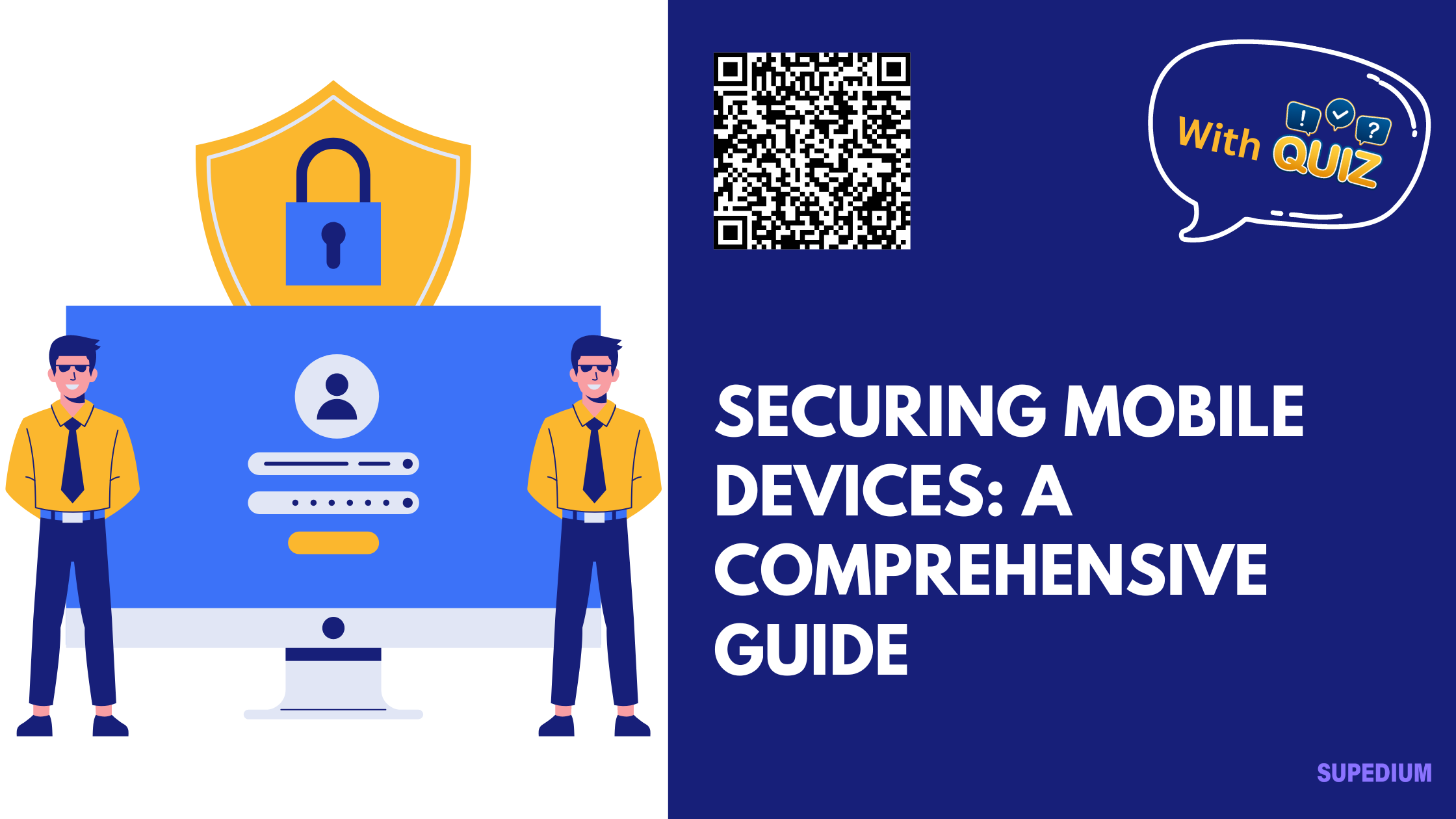Table of Contents
![]()
In our increasingly digital world, mobile devices such as smartphones and tablets have become central to both personal and professional lives. They store sensitive information, facilitate communication, and support a wide range of activities. However, this reliance on mobile technology also introduces various security risks. This article provides a thorough overview of securing mobile devices, covering general practices, personal and business-specific strategies, platform considerations, emerging threats, and best practices.
I. Introduction
Definition and Importance
Mobile devices, including smartphones and tablets, are versatile tools that serve as gateways to numerous services and sensitive information. They manage emails, financial transactions, personal photos, and much more. Securing these devices is crucial because a breach can lead to identity theft, financial loss, and unauthorized access to personal and business data.
II. General Security Practices
Device Locking
The first line of defense for any mobile device is a strong locking mechanism. Users should opt for complex passcodes over simple PINs or patterns. Modern devices also offer biometric security options, such as fingerprint sensors and facial recognition, which enhance security by ensuring that only authorized users can access the device.
Operating System Updates
Regular updates to the operating system (OS) are essential for maintaining security. Updates often include patches for known vulnerabilities and other critical fixes. Users should enable automatic updates whenever possible or regularly check for updates manually to ensure their devices are protected against the latest threats.
App Security
Apps are a significant source of potential vulnerabilities. To mitigate risks:
- Download Apps from Reputable Sources: Use official app stores like the Apple App Store or Google Play Store, which vet applications for security.
- Review App Permissions: Examine and manage app permissions to ensure they align with the app’s purpose. Avoid granting unnecessary access to sensitive data.
Data Encryption
Encrypting data stored on mobile devices protects it from unauthorized access. Most modern devices come with built-in encryption features that automatically encrypt data when the device is locked. Users should ensure that encryption is enabled to safeguard their information.
Backup and Recovery
Regular backups are vital for recovering data in case of loss or theft. Users can back up their data to cloud services or local storage. Familiarize yourself with the backup and recovery options provided by your device and ensure that backups are performed regularly.
III. Personal Device Security
Network Security
Public Wi-Fi networks are often less secure and can be a breeding ground for cyber threats. Avoid using public Wi-Fi for sensitive transactions. If necessary, use a Virtual Private Network (VPN) to encrypt your internet connection and protect your data from eavesdropping.
Phishing and Scams
Phishing attempts can trick users into divulging personal information or downloading malware. Be cautious of unsolicited messages or emails requesting sensitive information. Verify the legitimacy of communications before responding or clicking on links.
App Management
Regularly review installed apps and remove those that are no longer needed or seem suspicious. Keeping your app list lean reduces the potential attack surface for malware and exploits.
Location Services
Managing location permissions helps protect your privacy. Use device features like “Find My Device” to track and secure your device if it is lost or stolen. Adjust location settings to limit apps’ access to your location based on necessity.
IV. Business Device Security
Mobile Device Management (MDM)
For businesses, Mobile Device Management (MDM) solutions are critical in enforcing security policies and managing devices. MDM tools allow IT administrators to remotely manage device configurations, enforce security policies, and perform actions such as remote wipe if a device is compromised.
Access Controls
Implementing role-based access controls ensures that employees only have access to the resources necessary for their roles. Regularly review and adjust permissions based on changes in job functions or employment status to minimize the risk of unauthorized access.
Secure Communication
For sensitive communications, use encrypted messaging apps and secure communication protocols. Avoid using unverified or insecure channels to discuss confidential business matters.
Incident Response
Having an incident response plan is crucial for addressing security breaches promptly. The plan should include steps for isolating compromised devices, notifying affected parties, and recovering data. Regularly update and test the plan to ensure its effectiveness.
V. Platform-Specific Security
iOS Security
iOS devices benefit from Apple’s stringent security measures, including the Secure Enclave, which provides hardware-based encryption and secure storage for sensitive data. Regular updates from Apple also ensure that vulnerabilities are promptly addressed.
Android Security
Android devices offer various security features, including Google Play Protect, which scans apps for malware. However, because of the diverse range of manufacturers, security updates can vary. Users should regularly check for updates and manage app permissions to enhance security.
Cross-Platform Considerations
Security practices can differ between iOS and Android. Ensure that cross-platform applications adhere to security best practices and are regularly updated to address any vulnerabilities that could affect both platforms.
VI. Emerging Threats and Trends
Malware and Ransomware
Mobile malware and ransomware can infect devices through malicious apps or phishing schemes. Users should be cautious when downloading apps and avoid clicking on suspicious links. Security software can also help detect and mitigate these threats.
Internet of Things (IoT) Integration
IoT devices often connect to mobile devices, creating potential security vulnerabilities. Ensure that IoT devices are properly secured with strong passwords and updated firmware. Regularly review and manage the permissions and access granted to these devices.
Biometric Exploits
While biometric authentication provides convenience, it is not immune to exploitation. Be aware of potential risks, such as spoofing, and use additional security measures, such as strong passcodes, to enhance device protection.
VII. Best Practices for Secure Mobile Usage
User Awareness and Training
Educating users about mobile security risks and best practices is essential. Regular training sessions can help users recognize threats and adopt secure practices, such as avoiding phishing attempts and using secure networks.
Regular Security Audits
Conducting periodic security audits helps identify vulnerabilities and assess the effectiveness of existing security measures. Update security policies and practices based on audit findings to address new and emerging threats.
VIII. Conclusion
In an era where mobile devices are integral to daily life and business operations, securing them is paramount. By implementing strong security practices, staying informed about emerging threats, and regularly reviewing security measures, users can protect their devices from potential risks. As technology evolves, remaining vigilant and proactive about mobile security will continue to be essential in safeguarding personal and business information.






Be the first to comment